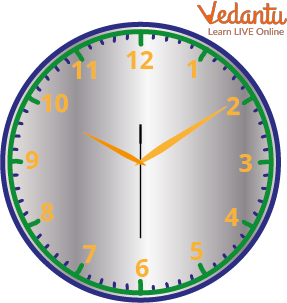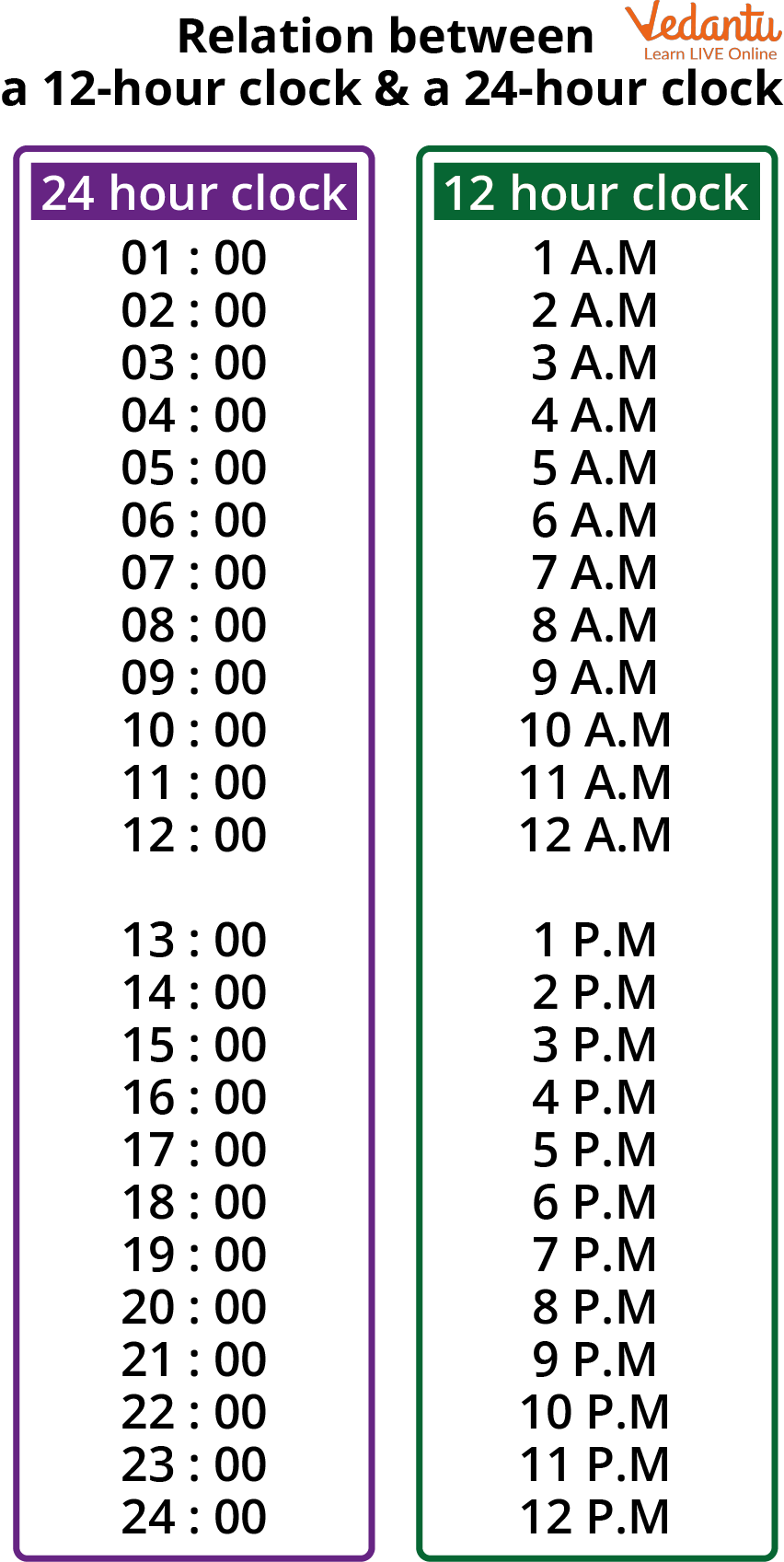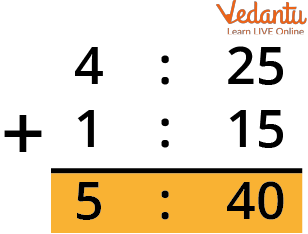




What is AM and PM in Time?
Observe the following image of a clock:

An Analog Clock
As you can see in the image, it is an analog clock. It shows, along with the hands, the numbers ordered from right to left and from 1 to 12. Each number indicates an hour of the day.
The 12-hour clock system uses the digits 1 through 12 followed by am or pm to denote each of the 24 hours of the day. While 2 AM is two hours after midnight and 10 PM is two hours before midnight, 6 AM and 6 PM are respectively early in the morning and late in the evening. Post meridiem is frequently abbreviated as PM, pm, p.m., or P.M., whereas ante meridiem is commonly referred to as AM, am, a.m., or A.M.
How to remember AM and PM full forms?
It could be challenging for people unfamiliar with the 12-hour convention to remember what is pm and am in time. There is a straightforward fix, though, and it doesn't need to understand the exact translation of the abbreviations (ante/post meridiem).
AM begins with the letter A in the alphabet.
Knowing that A denotes the beginning of the alphabet might be a wonderful point of reference for memorization given that AM corresponds to the start of the day.
Meanwhile, AM should be given the classification before noon because it is closer to PM in the alphabet.
Look at the following equivalence table.

Table of Time
Now, look at the “12 hour” format. Have you noticed that when indicating a time, it appears written in one of the following ways?

Two Analog Clocks with Time 8 am and 8 pm
The difference between the two scripts is the letters am and pm time. But what do they mean?
The am, means "before noon" and pm means "after noon”.
This time format shows 12:00 hours of the day. The midpoint is also called "noon."
From midnight to noon, the abbreviation am is used, and from noon to midnight, the abbreviation pm is used.
Solved Examples
Q1: Solve the following problem.
Sofia started cooking at 4:25 pm It took her an hour and fifteen minutes to finish the dessert she made. At what time did Sofia finish dessert?
Look at a clock at your home to solve this sum.
Ans: You will calculate at what time Sofia finished the dessert. To do this, at the start time, you are going to add the time elapsed in preparing the dessert, that is, 1 hour and 15 minutes, which leads to the following operation:

Addition of Time
This is how you have to add measures of time:
The addends are placed so that the hours are in the same column, the minutes are in another, and the seconds, if any, are in another.
Add seconds to seconds, minutes to minutes, and hours to hours.
If, once the seconds are added, they are more than 60, they are changed to minutes.
If, once the minutes are added, they are more than 60, they are converted to hours.
In general, if the sum that is made per unit of time allows forming a new immediately larger unit, then the necessary measurement is transferred to the next column, and the remaining units are left in the current column.
According to the above information, the result is 5:40 pm, when Sofia finished cooking the dessert.
Activity 1: Order the following images according to the time in which the activities shown could be carried out.

Images at Different Hours of Time
As you can see, they have the same time, but at different parts of the day. Some occur "before noon" or am, and others "after noon" or pm.
On the left side, we should accommodate the activities that can be done at nine in the morning, and on the right, those that can be done at nine at night.
On the left side would be the image where the girl is having breakfast, the boy who is in class, and finally, where the boy plays with his pet.
On the right side, all the images show nocturnal activities such as stargazing, sleeping, and organizing school supplies for the next morning are to be placed.
The correct classification would be the following:

Different Images at Two Times of Day
Practice Questions
Q1: The time is 18:35 on the 24-hour clock. What is 18:35 on the am and pm time clock?
Ans: 6:35 PM.
Q2: What is 1:38 PM on the 24-hour clock?
Ans: 13:38 PM.
Summary
As we have said above, the acronym AM refers to the first twelve hours of the day, starting at midnight:
Twelve o'clock at night would be 12 am. Am and Pm in English are incorporated into commonly used digital clocks. In writing, and when we do not want to misrepresent or confuse the times at which an event occurred, such as in a newspaper report, we may prefer to avoid am and pm and rely on the 24-hour system.
FAQs on To The Beat of The Clock - The AM and PM
1. What do you mean by AM and PM and how can I tell if it is AM or PM?
A 12-hour clock uses the units AM and PM to denote the passage of time. The time is shown as AM between midnight and 11:59 noon and as PM between 12 noon and 11:59 midnight. Post Meridiem is the opposite of Ante Meridiem.
The 12-hour clock divides the 24 hours of a day into two periods, 12 hours each. The first 12-hour period is designated as AM. It runs from midnight to noon. The second 12-hour period is marked PM. It runs for 12 hours, from noon to midnight.
2. What does AM PM stand for? Are 8:00 AM and 8:00 PM the same?
Ante-meridiem (before the meridian line has passed the Sun) is denoted by the abbreviation "AM," while post-meridiem is denoted by the abbreviation "PM" (after the meridian line has crossed the Sun). No, the times 8:00 AM and 8:00 PM are not equivalent. Since AM (ante meridiem) refers to times before noon, 8 AM equates to 8 o'clock in the morning. In contrast, PM (post meridiem), meaning afternoon, refers to times from afternoon to midnight. Therefore, 8 PM is equivalent to 8 o'clock in the late afternoon or night.











